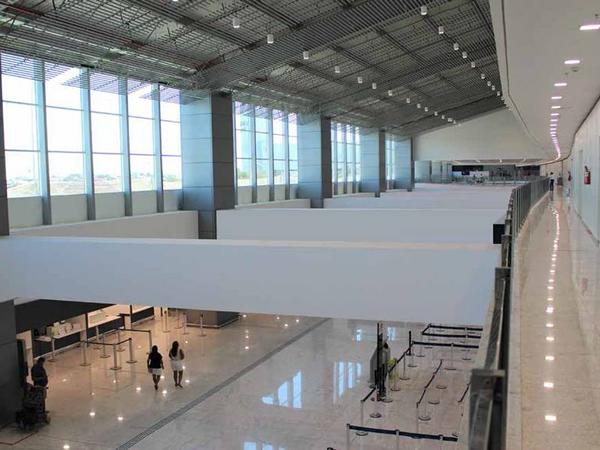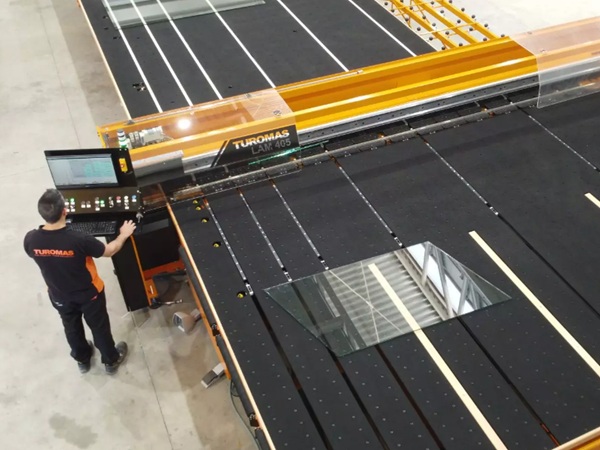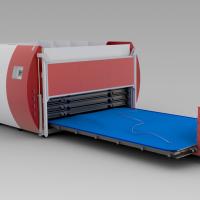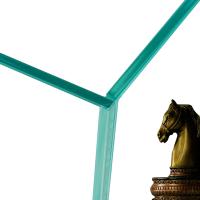
Date: 2 September 2019
In any textbook or encyclopaedia, noise scales are regularly illustrated with a whisper at one end and a jet engine at the other. With the sound associated with jet engines measuring between 120 and 140 decibels, it is clear to see why many airports employ advanced noise-attenuation technology.
In recent years, simple, “solid-wall” approaches to noise control have arguably been surpassed in many applications, by the introduction of advanced sound control glazing interlayers, such as Trosifol® SC Monolayer (Sound Control product line). As a result, architects and engineers now have the ability to use more and more aesthetic and functional glazed structures in their designs, without the fear of too much noise adversely affecting passengers and workers in the terminals.

The deployment of advanced acoustical interlayers in glass laminates is not just restricted to new builds. Given their ability to outperform monolithic glass, they are ideal for refurbishments or expansions too; something that caught the attention of the architects of a recent airport upgrade in Brazil.
Pinto Martins International Airport serves the northeastern city of Fortaleza, Brazil’s fifth largest and most densely populated city. Offering an extensive domestic network, the airport also serves a number of European services, including TAP Portugal, KLM and Alitalia; all of which offer direct connections to Europe.
The airport, in the state of Ceará, is currently undertaking significant work to both renew existing facilities and construct a new two-story terminal extension, which will expand the passenger terminal, in order to increase its traffic capacity.
Designed by Luiz Deusdara Building Workshop (LDBW), the new terminal exhibits 2,100 m2 (22,600 ft2 ) of glazing, which has been designed to open up the building to allow as much natural light in as possible. To counter the noise issue, the glazed panels are comprised of 14.76 mm (0.6 in) thick laminated acoustic glass, fabricated by Glassec Viracon, which is constructed from 6 mm (0.24 in) fully tempered clear glass with a reflective coating + 0.76 mm (30 mil) Trosifol® SC Monolayer PVB + 8 mm (0.31 in) fully tempered green glass.
Façade consultant Igor Alvim, Technical Director at QMD Consulting, explains: “There is a real need to provide airport users and the staff that work there with greater acoustical comfort. Our research showed that the 6 + 8 mm panel, with a sound isulated interlayer reached the necessary indexes which would provide the comfort level we were looking for. This research was helped by the fact that one of Brazil’s largest airports also uses this formulation. The colouring was chosen for two reasons, firstly to provide thermal control and secondly to maintain the overall appearance of the new terminal in relation to other buildings. In addition, as a lot of the profiles, accessories and systems used are well known and certified, additional site-/applicationspecific testing was unnecessary.”
According to Glassec Viracon Sales Coordinator, Valdir Arcocha, one of the challenges of the Fortaleza project was the execution of the delivery schedule, that was very aggressive and required weekly deliveries. He noted: “One of the benefits of working with Método and Passarelli, the general contractor, was that the GC utilized a building information modeling (BIM) system that transmitted project information quickly, enabling us to optimize the manufacturing process and meet the strict delivery requirements.”
Trosifol™ is the sole supplier of mono- and multilayer PVB for the acoustical glazing market. Thanks to its high adhesive strength, Trosifol® SC Monolayer is particularly suitable for laying between plies of heat-strengthened or fully tempered glass. Moreover, Trosifol® SC Multilayer can also be combined with other, e.g. colored, PVB variants. The acoustic properties of Trosifol® SC Multilayer are supplemented by further safety features, so a glass laminate containing Trosifol® SC Multilayer achieves impact resistance level P2A conforming to EN 356.
Prolonged exposure to sound levels above 85 decibels has the potential to cause hearing damage, so acoustic control is a vital element of many applications, alongside strength and solar control. As interlayers undergo further development, more and more applications are being found for glass, to replace solid walls, giving architects new-found freedom to design open and visually appealing structures.
Sunlight is one of Mother Nature’s most appealing attributes, and with the advent of advanced acoustical glazing technologies, we can now take advantage of its positive effects, no matter what type of structure is being envisaged.

Architect: Luiz Deusdara Building Workshop
Glass supplier: Cebrace
Laminator: Glassec Viracon
General contractor: Método and Passarelli
Façade consultant: QMD Consulting
Building Owner: Fraport Brasil
Trosifol™ is the global leader in PVB and ionoplast interlayers for laminated safety glass in the architectural segment. With the broadest product portfolio Trosifol™ offers outstanding solutions:
- Structural: Trosifol® Extra Stiff (ES) PVB and SentryGlas® ionoplast interlayer
- Acoustic: Trosifol® SC Monolayer and Multilayer for sound insulation
- UV Control: from full UV protection to natural UV transmission
- UltraClear: lowest Yellowness Index in industry
- Decorative & Design: black & white & colored interlayers
 600450
600450





































Add new comment